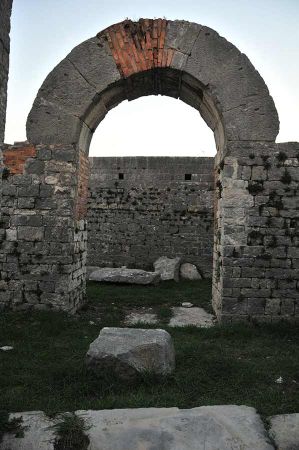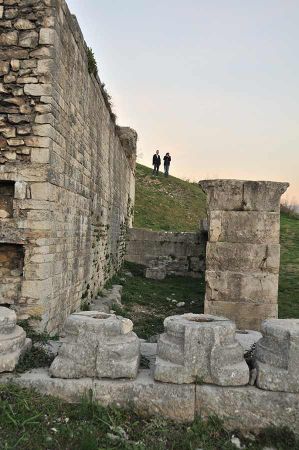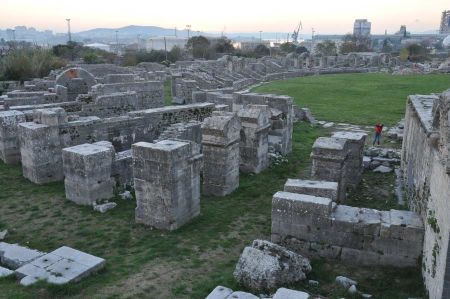Salona - capital of the Roman province of Dalmatia
- Written by Portal Editor
Our time at the Klis fortress was so long that we decided to drive to the ruined city of Salona as dusk was already approaching. As usual, loaded with a lot of information along the way, we returned to Solin and stopped at the ruins of the Roman amphitheatre, which, at least on the ground floor, were excavated and left an extremely impressive impression on us.
But more on these details later, also in the following blog.
Civil war between Caesar and Magnus Pompey

During this time, the first Greek colonists and some Italians lived in Salona alongside the local Illyrians. After the civil war between Caesar and Magnus Pompey in 47 BC. In the 4th century BC, Salona received the status of a Roman colony and became the metropolis of the Roman province of Illyria. After the last uprising of the Illyrians was thwarted, the city of Salona grew very quickly thanks to Roman "investors" and experienced its heyday.

There is an image of Salona on Trajan's Column in Rome, where you can see the theatre. There was an earlier built temple to the south of the theatre. Outside the city walls, along the streets that led out of the city, the necropolises were built according to Roman tradition. Near the amphitheatre is the Gladiators' Cemetery. Some old sarcophagi are still preserved.
The most famous is the western necropolis, in horto Metrodori, it was located next to the road to Tragurion and was known for the “cyclopean” border walls of the tombs. In the 1st century B.C.
Probably the most important time for Salona was the time in which Emperor Diocletian reigned (284–305). He had a magnificent palace (Diocletian's Palace) built not far from Salona, where he retired after his abdication in 305. The next morning we want to visit Deocletian's Palace.
At that time, Salona was already a densely populated city with a population of almost 60,000 including the surrounding area.
Aqueduct bridge that supplied fresh water to Diocletian's Palace
The irrigation system built in the 1st century BC was integrated into the wall, as was Salona's most monumental building, the amphitheatre. Also noteworthy is the very well-preserved aqueduct bridge that supplied Diocletian's Palace with fresh water. The Danish archaeologist and architect Ejnar Dyggve, who spent many years excavating Salona, suggests that the amphitheatre was built in the second half of the 2nd century BC.
It was built in 200 BC and had room for at least 15,000 spectators. Fights between gladiators and wild animals took place in the arena. This also explains the presence of two sanctuaries found in the substructure of the building, which were dedicated to the goddess Nemesis.
In Hellenism, Nemesis was also considered the goddess of the Agone (the goddess of all kinds of competitions) and was worshiped in the amphitheatres and racecourses in Roman times.
During the Gothic War (535-554) the amphitheatre was slightly modified to protect itself from the enemy. The arena survived the decline of Salona, only to be destroyed by the Venetians in the 18th century to prevent the advancing Turks from finding shelter there.
The remains of the arena, only the lower parts of the massive walls, are well preserved, and so Dyggve was able to make the well-known reconstruction.
We decided to postpone our further exploration of the amphitheatre until the next few days. Because of the many insights into the historical complications and connections to Aquileia and Stobi, we were so “filled” with knowledge that the first notes were urgently needed.
However, it slowly became clear what an interesting concept they were following in Solin in cooperation with the museums, archaeologists and travel companies.
Please read as well:
Archaeological Excavations of the settlement of Siculi in 2015
